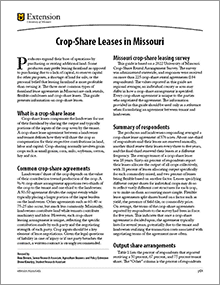

Crop-Share Leases in Missouri
Revised
Producers expand their base of operations by purchasing or renting additional land. The three most common types of farmland lease agreements in Missouri are cash rentals, flexible-cash leases and crop-share leases. This guide presents information on crop-share leases.
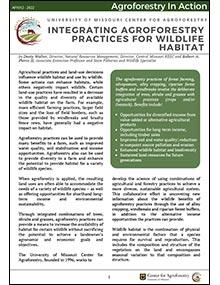
Integrating Agroforestry Practices for Wildlife Habitat
Revised
Learn how to incorporate management of trees, shrubs and grasses with your current farm practices to benefit white-tailed deer, eastern wild turkey, bobwhite quail, waterfowl and mourning doves.

Identification and Management of Turfgrass Diseases, Page 15
Reviewed
Microdochium patch is most common on new bentgrass greens under cover or in situations where nitrogen fertility was high going into the winter.
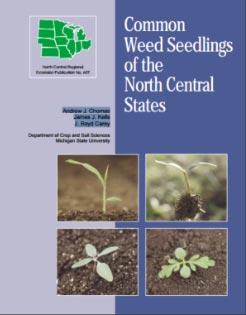
Common Weed Seedlings of the North Central States
Reviewed
Editor’s note
The following abstract describes a publication that is available for purchase from Michigan State Extension. To order this publication, please visit the MSU Extension Bookstore.
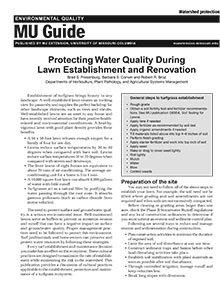
Protecting Water Quality During Lawn Establishment and Renovation
Reviewed
Establishing a healthy lawn enhances your landscape and benefits the environment. Learn best practices to protect water quality during lawn establishment.
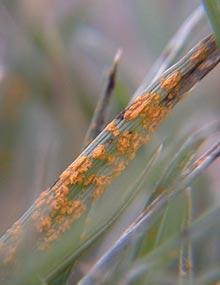
Identification and Management of Turfgrass Diseases, Page 18
Reviewed
Rust occurs to some extent on all turfgrasses, but the rust fungi are generally host specific. Rust is most severe on susceptible cultivars of Kentucky bluegrass, tall fescue, perennial ryegrass and zoysiagrass. Rust symptoms usually appear in late August to early September and continue through the fall months.

Identification and Management of Turfgrass Diseases, Page 21
Reviewed
Take-all patch of creeping bentgrass is a soilborne disease caused by a darkly pigmented, ectotrophic root-infecting fungus. The disease is most common on new greens. It also occurs on reconstructed greens, especially when methyl bromide had been used in the renovation.
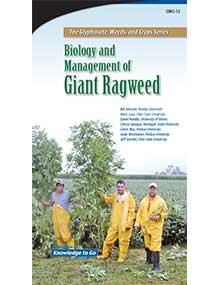
Biology and Management of Giant Ragweed
Reviewed
Editor’s note
The following abstract describes a publication that is only available as a downloadable PDF.
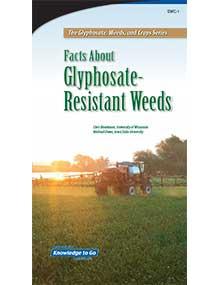
Facts About Glyphosate-Resistant Weeds
Reviewed
Editor’s note
The following abstract describes a publication that is only available as a downloadable PDF.
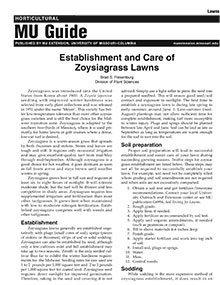
Establishment and Care of Zoysiagrass Lawns
Reviewed
Zoysiagrass is a warm-season grass that grows best in full sun. It can be established in several ways. Learn how to establish and care for a zoysiagrass lawn in this guide.

Identification and Management of Turfgrass Diseases, Page 04
Reviewed
Ascochyta leaf blight results in the rapid development of large irregularly shaped, straw-colored patches on Kentucky bluegrass and occasionally on tall fescue and perennial ryegrass during the summer. Because Ascochyta spp. are primarily foliar pathogens, diseased turfgrass usually recovers relatively quickly.
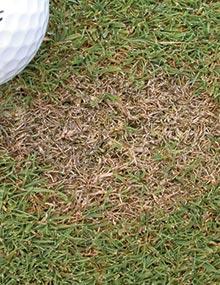
Identification and Management of Turfgrass Diseases, Page 07
Reviewed
Dead spot is a disease of new sand-based bentgrass greens or renovated greens where methyl bromide was used in the renovation. The disease first occurs one to four years after construction or renovation, gradually disappearing one to three years after its first occurrence.
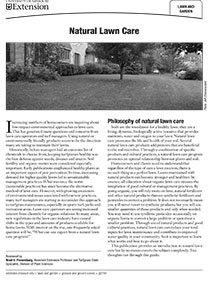
Natural Lawn Care
Reviewed
Learn lawn care practices that promote soil health, reduce the need for synthetic products, and improve water quality for a healthier, eco-friendly lawn.
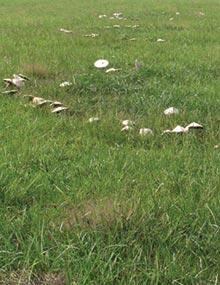
Identification and Management of Turfgrass Diseases, Page 10
Reviewed
Fairy ring is caused by more than 60 basidiomycete fungi, including those producing the familiar puffballs and toadstools. The rings result from the activities of these fungi growing radially through the thatch or soil, rather than from a direct parasitic relationship with the turfgrass.
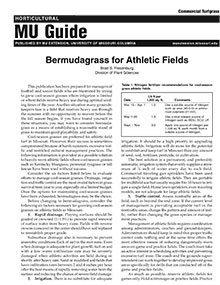
Bermudagrass for Athletic Fields
Reviewed
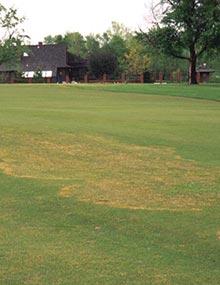
Identification and Management of Turfgrass Diseases, Page 13
Reviewed
Large patch is a cool-season disease of warm-season grasses. Symptoms are most common when these grasses are either entering or coming out of dormancy.
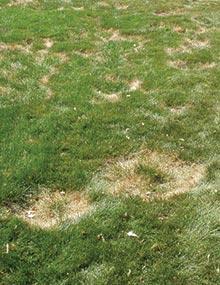
Identification and Management of Turfgrass Diseases, Page 16
Reviewed
Necrotic ring spot is a destructive disease of Kentucky bluegrass, but may also occur on red fescue and annual bluegrass. The disease is particularly damaging to bluegrass.
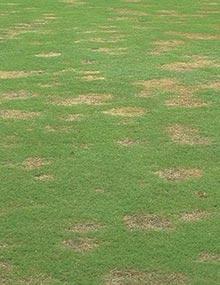
Identification and Management of Turfgrass Diseases, Page 19
Reviewed
Spring dead spot is a destructive disease of common bermudagrass and bermudagrass hybrids throughout the northern range of its adaptation in the U.S.

Identification and Management of Turfgrass Diseases, Page 22
Reviewed
Yellow patch is a cool-season disease that occurs on bentgrass and annual bluegrass putting greens and sometimes on higher-gut Kentucky bluegrass.
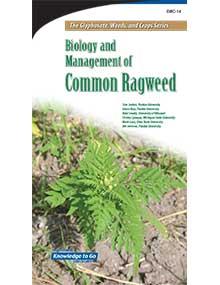
Biology and Management of Common Ragweed
Reviewed
Editor’s note
The following abstract describes a publication that is only available as a downloadable PDF.
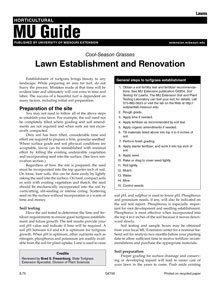
Cool-Season Grasses: Lawn Establishment and Renovation
Reviewed
Learn how to successfully establish or renovate cool-season grass lawns with proper soil preparation, seeding techniques, and essential fertilization steps.
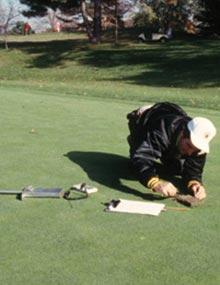
Identification and Management of Turfgrass Diseases, Page 02
Reviewed
Accurate diagnosis is the key to managing turfgrass disease in an environmentally and economically sound manner. When the cause is not accurately identified and management practices and control measures are not developed accordingly, inputs are wasted and high reestablishment costs may be incurred.
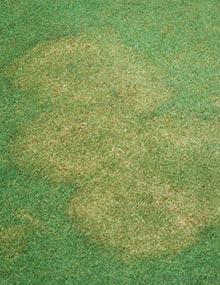
Identification and Management of Turfgrass Diseases, Page 05
Reviewed
Brown patch is a sheath- and leaf-blighting summer disease that is common on tall fescue and bentgrass. It is particularly severe on tall fescue. With increased use of tall fescue in urban and commercial landscapes, brown patch has become a significant management problem.

Grasses in Shade: Establishing and Maintaining Lawns in Low Light
Reviewed
Growing grass under trees is hard because the quality as well as the quantity of light changes in the shade. Learn what grass species and cultivars are shade-tolerant and how to manage a shady lawn in this University of Missouri Extension guide.

Identification and Management of Turfgrass Diseases, Page 08
Reviewed
Learn to identify and manage dollar spot, a common turfgrass disease affecting bentgrass and bluegrass, with symptoms, conditions, and control methods.